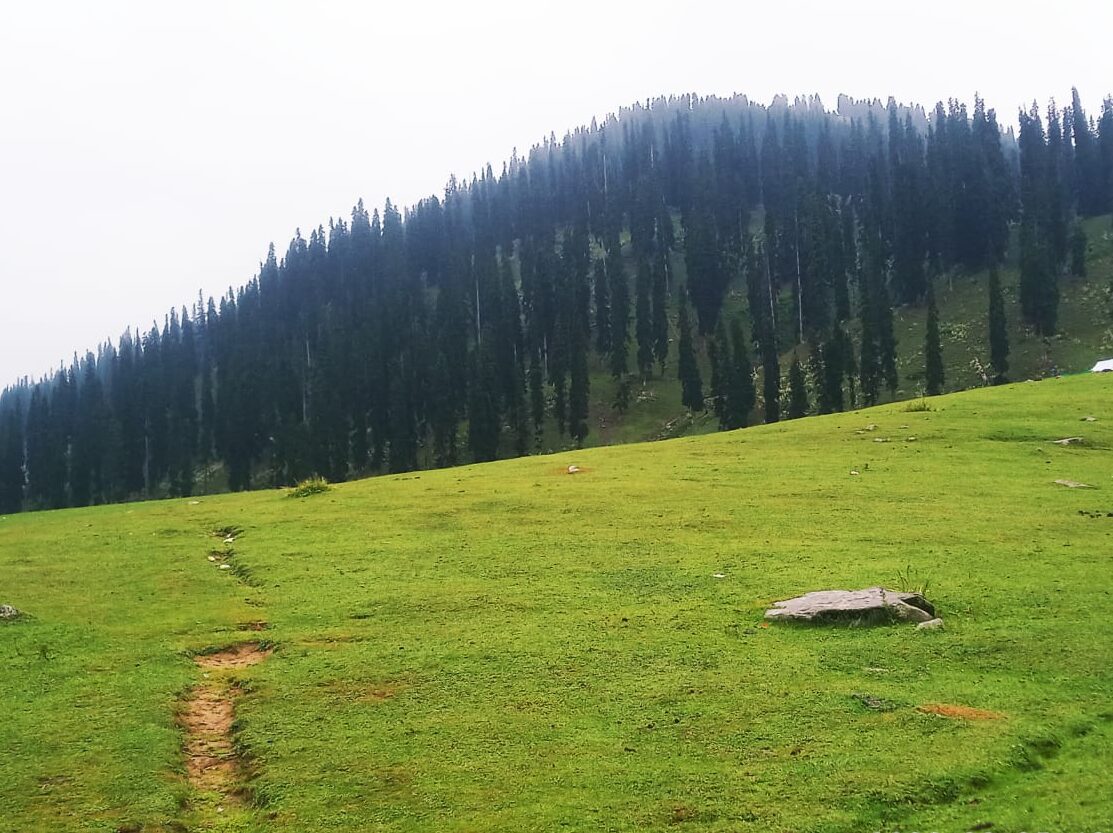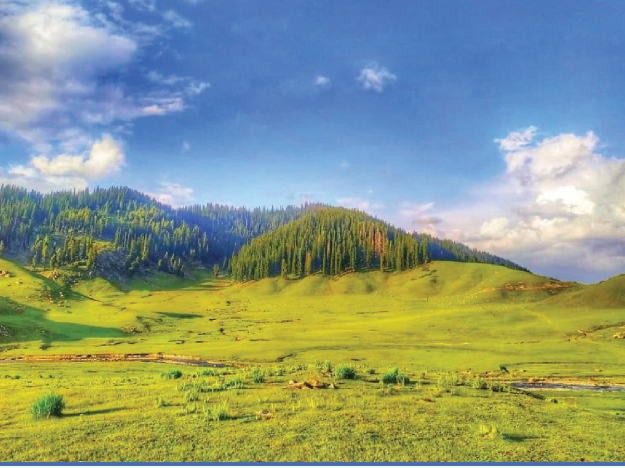The secrets of Bangus Valley, an untouched paradise in Kashmir. From lush meadows to dense forests, it’s a natural wonderland
By Mir Tanveer
Hidden within the enchanting expanse of Kashmir lies a treasure trove of untapped tourism potential, the picturesque Bangus Valley. Nestled within the Trans-Himalayan region, Bangus stands as a testament to nature’s grandeur, boasting a unique ecological tapestry. This extraordinary terrain encompasses a mountain biome, featuring a lush grassland ecosystem at lower altitudes, coupled with the majesty of the Taiga, or Coniferous forest. Exploring Bangus Valley Wonders
Situated at a lofty altitude of approximately 10,000 feet above sea level, Bangus Valley graces the northern reaches of Kupwara district, nestled within the Handwara sub-district. Spanning across an estimated expanse of 300 square kilometers, this primeval paradise, affectionately referred to as Bodh Bangus (Big Bangus), carves out an elliptical bowl, stretching gracefully along the east-west axis. Its pristine boundaries are embraced by the rugged embrace of Rajwar and Mawar to the east, the imposing Shamasbury and Dajlungun Mountains to the west, and the resolute confines of Chowkibal and Karnah Guli to the north. A smaller, yet equally captivating, valley known as Lokut Bangus (Small Bangus) graces the northeast quadrant of this verdant wonderland. Both these valleys lay claim to level, emerald meadows, encircled by the gentle, forest-clad slopes of Coniferous groves, or ‘budloo,’ with a meandering stream cascading through this idyllic landscape.
In the heart of Bangus Valley, nature enthusiasts find themselves ensnared by the hypnotic allure of the natural world. However, peering through the lens of tourism in the Kashmiri landscape, Bangus remains a hidden gem, a veritable pearl among underdeveloped and undiscovered meadows. Its tourism potential has regrettably eluded the eager gaze of adventure seekers, both from the Kashmir Valley and beyond.
Within the bounds of Bangus Valley, seasonal shepherds and tribal communities temporarily establish their rustic abodes, grazing their flocks during the fleeting summer months. Apart from these resilient locals, a modest number of intrepid trekkers and adventure enthusiasts occasionally traverse these untouched terrains.

Nevertheless, Bangus Valley holds immense promise as a haven for adventure tourism. From exhilarating treks to formidable mountaineering expeditions and the serenity of camping under the vast, verdant canopy, the possibilities for visitors are boundless. With the provision of essential infrastructure, this pristine paradise could become a vibrant tourism hotspot, rivalling the likes of Gulmarg and Pahalgam.
Furthermore, Bangus Valley, with its unspoiled natural backdrop of dense forests and towering mountains, beckons filmmakers to explore its cinematic potential. With proper permissions and access, this idyllic location could host a myriad of movies and music production series, adding a new dimension to Bangus’s allure.
On a more scientific note, Bangus Valley boasts rich biodiversity, making it an ideal destination for researchers in the life sciences. The area offers a unique opportunity for the study of various medicinal plants and flowers, potentially leading to the discovery of new species with pharmaceutical applications.
The valley’s abundant birdlife, showcasing diverse species, has the potential to captivate bird enthusiasts and nature photographers alike. The possibility of capturing the essence of these avian wonders in their natural habitat could make Bangus Valley a burgeoning destination for bird photography.
However, conversations with tourists reveal a common sentiment: Bangus Valley remains an uncharted paradise in the Kashmir Valley, desperately in need of promotion as a novel tourist destination. Awareness among local tourists regarding its untapped potential is limited, highlighting the urgency of comprehensive promotion efforts.
To unlock the valley’s full potential, infrastructure development is imperative. Adequate facilities, including restrooms, parking areas, marketing initiatives, and enhanced network connectivity, must be established to ensure a seamless and enjoyable experience for every visitor.
Additionally, the Bangus Development Authority must prioritize the establishment of waste disposal units in this ecologically sensitive region. Such measures are crucial in minimizing the impact of human litter, ensuring the preservation of the area’s natural beauty and pristine landscape.
Moreover, the installation of well-placed trash bins and rigorous awareness campaigns are essential components of preserving this idyllic haven. In the lap of nature’s tranquility, it becomes our responsibility to safeguard these pristine landscapes from the encroachment of plastic pollution, preserving their everlasting charm and allure.
The views expressed in this article are solely those of the author and do not necessarily reflect the opinions or views of this newspaper


Comments are closed.